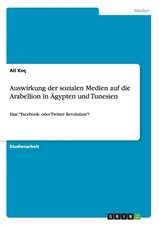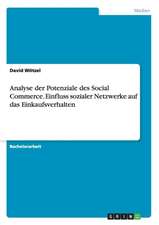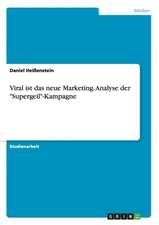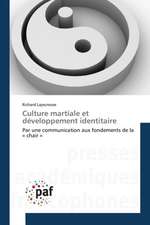What IS News?
Editat de Donnalyn Pompper, Lindsay Hoffmanen Limba Engleză Hardback – 8 iun 2021
News does not happen in a vacuum and journalism is a practice with a definable milieu which manufactures a product shaped by a complex and subjective collection, organization, and dissemination of information. The social import of revisiting Herbert Gans’ "what is news" ethnographic query in 1979 played out in earnest in 2020. Americans watched news coverage of the COVID-19 pandemic offer politicized health information complete with conflicting reports of disagreeing experts, conspiracy theories, vaccination resistance, and racist language targeting China and people of Asian descent. This collection expands on mass communication theory frameworks built since the 1970s, to enable us to better operationalize and understand mass media’s role in defining, shaping, and amplifying news.
The chapters in this book were originally published as a special issue of Mass Communication and Society.
| Toate formatele și edițiile | Preț | Express |
|---|---|---|
| Paperback (1) | 381.81 lei 6-8 săpt. | |
| Taylor & Francis – 25 sep 2023 | 381.81 lei 6-8 săpt. | |
| Hardback (1) | 997.58 lei 6-8 săpt. | |
| Taylor & Francis – 8 iun 2021 | 997.58 lei 6-8 săpt. |
Preț: 997.58 lei
Preț vechi: 1216.57 lei
-18% Nou
Puncte Express: 1496
Preț estimativ în valută:
190.90€ • 198.18$ • 159.19£
190.90€ • 198.18$ • 159.19£
Carte tipărită la comandă
Livrare economică 25 martie-08 aprilie
Preluare comenzi: 021 569.72.76
Specificații
ISBN-13: 9781032010298
ISBN-10: 1032010290
Pagini: 192
Dimensiuni: 152 x 229 x 13 mm
Greutate: 0.38 kg
Ediția:1
Editura: Taylor & Francis
Colecția Routledge
Locul publicării:Oxford, United Kingdom
ISBN-10: 1032010290
Pagini: 192
Dimensiuni: 152 x 229 x 13 mm
Greutate: 0.38 kg
Ediția:1
Editura: Taylor & Francis
Colecția Routledge
Locul publicării:Oxford, United Kingdom
Public țintă
Postgraduate and UndergraduateCuprins
Introduction: From What IS News to How Vital Is News
Donnalyn Pompper and Lindsay Hoffman
1. "I Know It When I See It": Constructing Emotion and Emotional Labor in Social Justice News
Allison J. Steinke and Valerie Belair-Gagnon
2. When Pundits Weigh In: Do Expert and Partisan Critiques in News Reports Shape Ordinary Individuals’ Interpretations of Polls?
Ozan Kuru, Josh Pasek and Michael W. Traugott
3. News, Nationalism, and Hegemony: The Formation of Consistent Issue Framing Throughout the U.S. Political Right
Burton Speakman and Marcus Funk
4. The Ineffectiveness of Fact-Checking Labels on News Memes and Articles
Anne Oeldorf-Hirsch, Mike Schmierbach, Alyssa Appelman and Michael P. Boyle
5. The Influence of Presumed Fake News Influence: Examining Public Support for Corporate Corrective Response, Media Literacy Interventions, and Governmental Regulation
Yang Cheng and Zifei Fay Chen
6. That’s Not News: Audience Perceptions of "News-ness" and Why It Matters
Stephanie Edgerly and Emily K. Vraga
7. "Fake News Is Anything They Say!" — Conceptualization and Weaponization of Fake News among the American Public
Chau Tong, Hyungjin Gill, Jianing Li, Sebastián Valenzuela and Hernando Rojas
Donnalyn Pompper and Lindsay Hoffman
1. "I Know It When I See It": Constructing Emotion and Emotional Labor in Social Justice News
Allison J. Steinke and Valerie Belair-Gagnon
2. When Pundits Weigh In: Do Expert and Partisan Critiques in News Reports Shape Ordinary Individuals’ Interpretations of Polls?
Ozan Kuru, Josh Pasek and Michael W. Traugott
3. News, Nationalism, and Hegemony: The Formation of Consistent Issue Framing Throughout the U.S. Political Right
Burton Speakman and Marcus Funk
4. The Ineffectiveness of Fact-Checking Labels on News Memes and Articles
Anne Oeldorf-Hirsch, Mike Schmierbach, Alyssa Appelman and Michael P. Boyle
5. The Influence of Presumed Fake News Influence: Examining Public Support for Corporate Corrective Response, Media Literacy Interventions, and Governmental Regulation
Yang Cheng and Zifei Fay Chen
6. That’s Not News: Audience Perceptions of "News-ness" and Why It Matters
Stephanie Edgerly and Emily K. Vraga
7. "Fake News Is Anything They Say!" — Conceptualization and Weaponization of Fake News among the American Public
Chau Tong, Hyungjin Gill, Jianing Li, Sebastián Valenzuela and Hernando Rojas
Notă biografică
Donnalyn Pompper is Professor and Endowed Chair in Public Relations, School of Journalism & Communication, University of Oregon. She is an internationally recognized award-winning teacher and scholar who has published 12 books and dozens of peer-reviewed journal articles about PR, corporate social responsibility, and social identity.
Lindsay Hoffman is Associate Professor at the Department of Communication, University of Delaware, USA. She is also Associate Director of the Center for Political Communication at UD, and her research focuses on the intersection of politics and technology.
Lindsay Hoffman is Associate Professor at the Department of Communication, University of Delaware, USA. She is also Associate Director of the Center for Political Communication at UD, and her research focuses on the intersection of politics and technology.
Descriere
This volume explores contemporary understandings of "news values" and the "fake news" phenomena and collects together important new theory-building research that sheds light on implications of compromised news products and the ways it shapes perceptions.


















